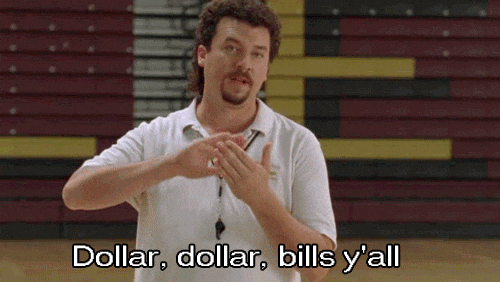- Simple Profits
- Posts
- Issue #167: The Compound Interest of Branding 📈
Issue #167: The Compound Interest of Branding 📈
The Underrated Asset of Brand Equity
Welcome back to the nearly 40,000 investopreneurs joining us today! I keep telling myself this will all be worth it when we hit 100k subscribers (who am I kidding we love what we do) - if you could help us get there…. that’d be pretty, pretty cool of you. 😎
As always, don’t miss out. Read all the way to the bottom and get a free structure & strategy that you can immediately adopt and implement in your business.
Building Customer Loyalty: The Underrated Asset of Brand Equity 📈
The concept of customer loyalty is as ancient as commerce itself. From the neighborhood baker remembering your favorite pastry, to today's sophisticated loyalty programs of airlines and e-commerce giants, businesses have always recognized the value of a repeat customer. But in the age of digital and brand transformations, customer loyalty isn’t just about a returning customer; it’s about creating brand advocates.

The Compound Interest of Branding
Consider brand equity as compound interest in the world of branding. Every time a customer returns to your brand because they trust it, that trust deepens, similarly to how compound interest accumulates. And just like compound interest, the magic of compounded brand equity becomes palpable over time.
A one-off purchase might be a result of a good marketing campaign, but when a customer keeps coming back, they’re investing trust in your brand. And as this trust accrues, they're more likely to not only keep purchasing but also to recommend your brand to others.
Simple fact: ~20% of you, our loyal readers, make reading Simple Profits a part of your daily routine with an astounding 90%+ open rate on our daily emails, and ~40% of our entire 40,000+ subscriber base opens our newsletter on average each day. Thank you!
From Loyalty Programs to Loyalty Cultures

1. Traditional Loyalty Programs: Businesses reward customers for repeat purchases. Think of the frequent flyer programs or the "buy 9, get the 10th free" punch cards at your local coffee shop.
Example: Starbucks Rewards. This program not only offers free drinks after a certain number of purchases but also offers birthday rewards, order-ahead features, and special members' offers.
2. Experience-Based Loyalty: Instead of direct rewards, these are designed to improve the customer's experience every time they interact with the brand.
Example: Amazon Prime. While it does offer tangible benefits like free shipping, the real value is in the seamless, friction-free shopping experience it offers its members.
3. Community-Based Loyalty Programs: Here, the focus is on building a community around the brand. This can often lead to organic brand promotion through word-of-mouth.
Example: Harley Owners Group (H.O.G). Harley Davidson has cultivated more than a brand; it’s a lifestyle and a community. H.O.G events, exclusive to owners, deepen the brand's relationship with its customers.
4. Value-Based Loyalty: Brands align themselves with a cause or value that resonates with their customers.
Example: TOMS Shoes. With its "One for One" model, TOMS promises that for every pair of shoes purchased, another pair will be donated to a person in need. This creates loyalty among socially-conscious consumers.
Translating Loyalty into Business Value

The direct translation of customer loyalty into business value can be seen in:
Increased Customer Lifetime Value (CLV): Loyal customers purchase more and more often.
Lower Marketing Costs: It’s cheaper to retain an existing customer than to acquire a new one. Plus, word-of-mouth recommendations from loyal customers are free.
Operational Efficiency: Predictable revenue from repeat customers allows businesses to streamline their operations.
Constructive Feedback: Loyal customers are more likely to give feedback, which can be invaluable for product development.
Resilience: A solid base of loyal customers can be a buffer against challenges, from negative reviews to economic downturns.
Consistency is Key
However, it's essential to remember that loyalty is earned over time. You cannot expect to launch a loyalty program today and see results tomorrow. Like all genuine relationships, it's built on consistent positive experiences, trust, and mutual value.
Brands that have successfully fostered loyalty don’t just meet customer expectations—they exceed them. They show up, deliver, and then deliver some more. They're in it for the long haul, recognizing that true brand equity is not just about recognition, but reverence.
As businesses continue to navigate the ever-evolving landscape of digital transformation, one thing remains unchanged: the value of a loyal customer. In the words of Shep Hyken, a customer service expert, "The purpose of a business is to create a customer who creates customers." That's the power of loyalty; it doesn't just retain, it multiplies.
By focusing on customer loyalty and building programs and cultures around it, businesses can ensure that they're not just driving sales, but building brand equity that stands the test of time.
Worksheet: Building Customer Loyalty for Brand Equity

Introduction:
Your brand's equity doesn't solely reside in its name, logo, or the products you sell. It's deeply entrenched in how your customers feel about your brand. This worksheet is designed to help you assess, build, and strengthen your customer loyalty strategies to enhance brand equity.
Part 1: Self-Assessment
1. Current State of Customer Loyalty:
Repeat Purchase Rate: ____% (How often do customers come back to purchase again?)
Net Promoter Score (NPS): ____ (On a scale of 0-10, how likely are customers to recommend your brand?)
Customer Retention Rate: ____% (How many customers continue to do business with you over time?)
2. Existing Loyalty Programs (if any):
Describe your current loyalty program(s):
Type of Program (Traditional, Experience-Based, Community-Based, Value-Based): ________
Key Features: ________
Perceived Strengths: ________
Areas for Improvement: ________
Part 2: Exploration and Planning
1. Define Your Brand’s Value Proposition:
What unique value or experience does your brand offer that customers can't get elsewhere?
2. Loyalty Program Ideas
Based on your brand’s value proposition, which type of loyalty program would resonate most with your customers?
Traditional
Experience-Based
Community-Based
Value-Based
Jot down ideas related to the chosen program:
Program Name: ________
Key Features/Benefits:
3. Engagement Strategies:
How will you keep your customers engaged and informed about your loyalty program?
Email Campaign Ideas: ________
Social Media Promotions: ________
In-Store/Physical Promotions: ________
Part 3: Measuring and Refining
1. Key Performance Indicators (KPIs):
Identify metrics that will help measure the effectiveness of your loyalty strategies.
KPI 1: ________ | Target: ________
KPI 2: ________ | Target: ________
2. Feedback Collection:
How will you gather feedback from customers about the loyalty program?
Feedback Channels:
Online Surveys
Focus Groups
Direct Customer Interviews
________ (Any other channel)
3. Periodic Review:
How often will you review the performance and feedback?
Monthly
Quarterly
Bi-Annually
Annually
Conclusion:
By regularly assessing, planning, and refining, you can build a customer loyalty strategy that not only resonates with your audience but also contributes significantly to your brand equity. Remember, loyalty isn't just about transactions; it's about building lasting relationships.
If You Appreciate Us Sharing This With You - Pay It Forward
We are on a mission to get to 100k newsletter subscribers & need your help to do it.
At 50k subscribers, we are going to kick off our $1M (in wedge equity) book launch giveaway! You’ve got to be “in it to win it” tho. Anyone with a minimum of 1 referral will be eligible to participate. Make sure you lock in eligibility today by sharing your unique referral URL at the bottom of this email.
Get 1 referral & earn access to our community of investopreneurs + FREE Business Operating System Get 10 referrals & earn a FREE COPY of my upcoming book - Simple Profits: “The Book” on Bootstrapping + Community Book Club Bootcamp |


